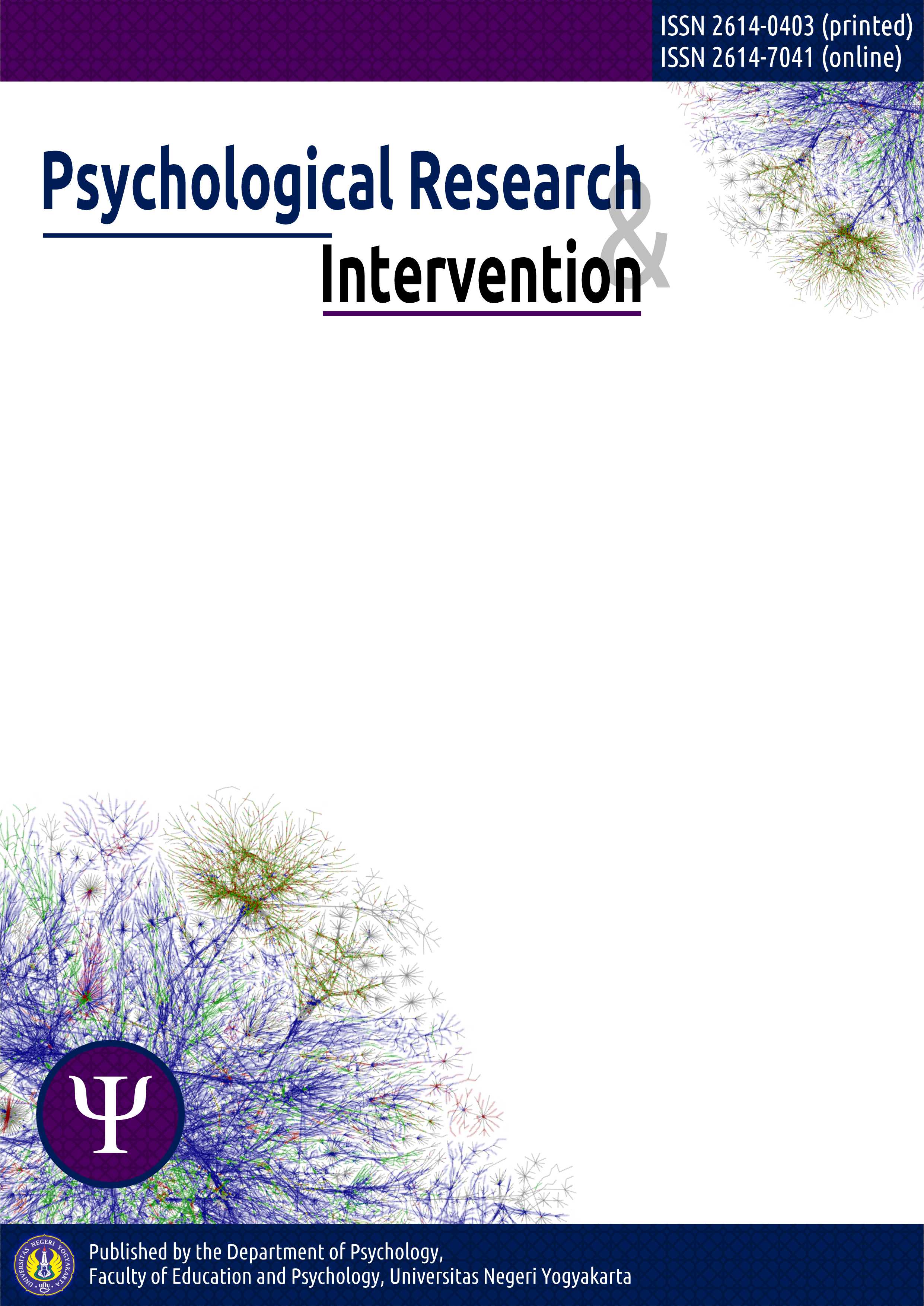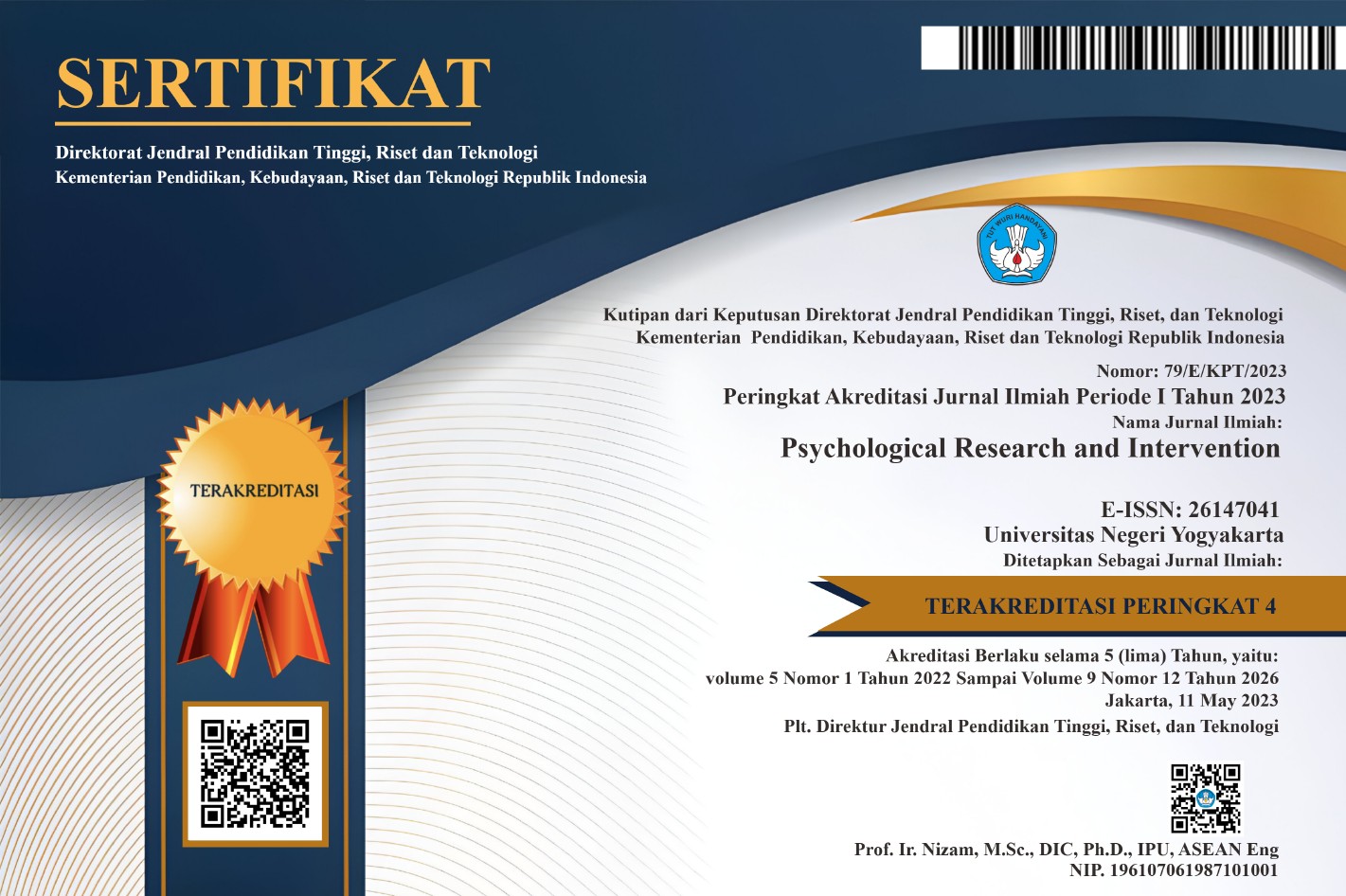Living with Dwarfism: Experience of Individuals Living with with Dwarfism in Palak Siring Village from Interpersonal Communication Perspective
DOI:
https://doi.org/10.21831/pri.v4i2.44369Keywords:
Existence, Dwarfism, Interpersonal CommunicationAbstract
Having a perfect physique is the aspiration of every human being. However, some people have to live with rare occurrence of dwarfism caused by several factors. Palak Siring Village located in Bengkulu, is a village with one of the highest population of people with dwarfism in Indonesia. This current study aims to explore the forms of interpersonal communication, and the factors causing the existence of dwarf humans in Palak Siring Village. This research is qualitative descriptive research with analytical method. The participants of this study are people with dwarfism living in Palak Siring Village. Data was collected using closed-ended questionnaires, interpersonal communication questionnaires, and interview. The results showed that the existence of people with dwarfism in Palak Siring Villade is due to the hereditary factor of genes inherited from mother's side. The genes was said to be originated from women in Padang Guci Kaur that moved to Kedurang and Palak Siring Village. Living experience includes able to communicate well, being noticed by many people, having access to higher education, being able to operate social media, and having been covered in various media. Whereas the form of interpersonal communication is carried out through three stages, namely the approach process, building communication and developing credibility. In supporting effective communication, there are several aspects that are used such as aspects of openness, empathy, supportive attitude, positive attitude, and equality.
References
Aprilia, N. (2016). Instagram sebagai ajang eksistensi diri studi fenomenologi mengenai pengguna instagram sebagai ajang eksistensi diri pada mahasiswa Ilmu Komunikasi Fisip Unpas (Doctoral dissertation, Perpustakaan).
Aryati, A. (2018). Memahami manusia melalui dimensi filsafat (Upaya Memahami Eksistensi Manusia). El-Afkar: Jurnal Pemikiran Keislaman dan Tafsir Hadis, 7(2), 79-94.
Cahyani, J. D. (2016). Upaya Disabilitas dalam Eksistensi Sosial sebagai Subjek (Self) (Studi Pola Pada Himpunan Disabilitas Kabupaten Bojonegoro). Skripsi. Universitas Muhammadiyah Malang.
Cahyono, S. A. T. (2020). Penyandang Disabilitas: Menelisik Layanan Rehabilitasi Sosial Difabel pada Keluarga Miskin. Media Informasi Penelitian Kesejahteraan Sosial, 41(3), 239-254.
Danim, S. (2002). Menjadi peneliti kualitatif.
Devito (Alih Bahasa: Ir. Maulana M.S.M). (2011). Komunikasi Antar Manusia. Tanggerang Selatan: Karisma Publishing Group
Elfina, M. L., & Ramadhani, D. M. (2019). Life Satisfaction on Dwarfism. In 4th ASEAN Conference on Psychology, Counselling, and Humanities (ACPCH 2018). 113-117.
Hellosehat. (2021). Dwarfisme. https://hellosehat.com/parenting/kesehatan-anak/penyakit-pada-anak/dwarfism-cebol/. Diakses pada 19 Agustus 2021.
Kurniawan, I. (2018). Gambaran Aktualisasi Diri Penyandang Disabilitas Di Yogyakarta. Skripsi. Universitas Mercu Buana Yogyakarta.
Nurlina, M. (2019). Resiliensi pada penyandang Dwarfism: Studi kasus pada laki-laki penyandang Dwarfism (Doctoral dissertation, UIN Sunan Gunung Djati Bandung).
Oktary, D., Marjohan, M., & Syahniar, S. (2019). The Effects of Self-Confidence and Social Support of Parents On Interpersonal Communication of Students. Journal of Educational and Learning Studies, 2(1), 5-11
Pauli, R. M. (2019). Achondroplasia: A comprehensive clinical review. In Orphanet Journal of Rare Diseases (Vol. 14, Issue 1). Orphanet Journal of Rare Diseases.
Pritchard, E. (2021). Dwarfism, Spatiality and Disabling Experiences. In Dwarfism, Spatiality and Disabling Experiences. Routledge.
Rahardjo, Mudjia. (2010). Triangulasi Dalam Penelitian Kualitatif. Jakarta.
Rahmawati, J. L., & Pratisti, W. D. (2019). Hubungan Antara Dukungan Sosial dan Penerimaan Diri dengan Resiliensi pada Disabilitas (Doctoral dissertation, Universitas Muhammadiyah Surakarta).
Saville, K. M. (2018). Dwarfism: wrestling show will simply reinforce prejudice.
Setiadi, G. J. (2019). Self-disclosure individu androgini melalui instagram sebagai media eksistensi diri. Jurnal Studi Komunikasi, 3(2), 272-286.
Sugiyono. (2009). Memahami Penelitian Kualitatif. Bandung: CV. Alfabeta
Sugiyono. (2013). Metode Penelitian Kuantitatif Kualitatif dan R&D. Bandung: Alfabeta.
Thoha, M. (2002). Perilaku Organisasi: Kajian Teoritis dan Aplikasinya. Jakarta: Rajawali Pers.
Venter, E. (2019). Challenges for meaningful interpersonal communication in a digital era. HTS Theological Studies, 75(1), 1-6.












